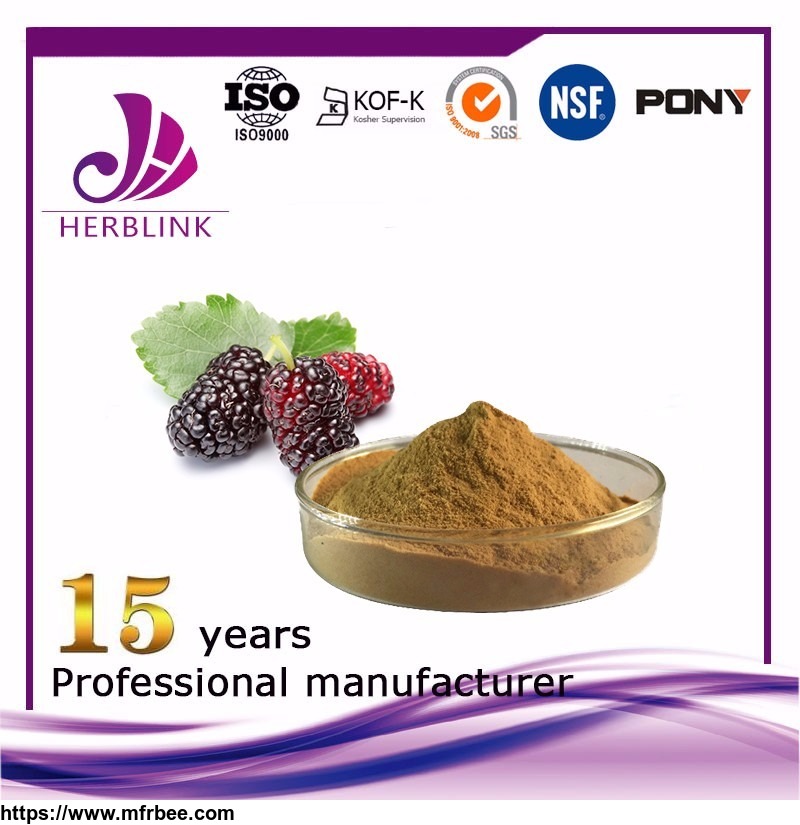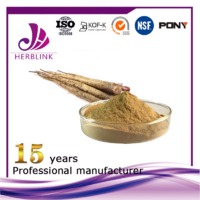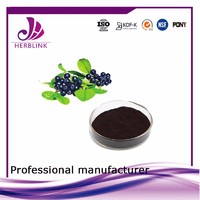Mulberry Extract Anthocyanin 25%, 1-DNJ 1.0%
Product Quick Detail
- FOB Price
- USD $99.00 / Piece
- Minimum Order
- 1
- Place Of Origin
- China
- Packaging
- N/A
- Delivery
- 15 Days
Specifications
-
Latin Name: Morus alba L.
Synonyms: Chinese White Mulberry, Chi Sang, Chin Sang, Common Mulberry, Egyptian Mulberry, Mon Tea, Mora, Moral Blanco, Morera Blanca, Morin, Morus alba, Morus indica, Morus multicaulis, Mûrier Blanc, Mûrier Blanc de Chine, Mûrier Commun, Mûrier du Ver à Soie,
Part of Used: Berry,leaf
Specifications: Anthocyanin 25%, 1-DNJ 1.0%
Appearance: Dark violet/Brown fine powder
Application: Medicine, food additive, dietary supplement
What is Mulberry?
Mulberries are the delicious, tart, sweet and succulent fruits of the trees belonging to the Genus Morus.About 10 to 16 species of the Morus tree yield mulberries of which 3 species of economic importance are recognised and they are:
White mulberry tree - Morus alba, a native of eastern and central China.
Red mulberry tree - Morus rubra, a native of eastern United States.
Black mulberry tree - Morus nigra, a native of western Asia.
Mulberries, now are grown the world over.The mulberry plant is a rapid grower initially and slows down later. The tree is 35 to 50 feet tall.The mulberry fruit is not a single fruit but a composite fruit, as the entire inflorescence develops into a fruit. When unripe the mulberries are white, green or pale yellow with the edges pink. When mature they can be white to red to dark purple, almost black in colour.The white mulberry fruit is actually white to pink when mature. The darker variety of fruit has a stronger flavour than the white variety.
The mulberry plant has been highly regarded in traditional Chinese and Japanese medicine. It may possess blood sugar lowering effects in animal studies. Preliminary human studies have confirmed its benefits in both preventing and treating type 2 diabetes.
- Contact: yu zhang








